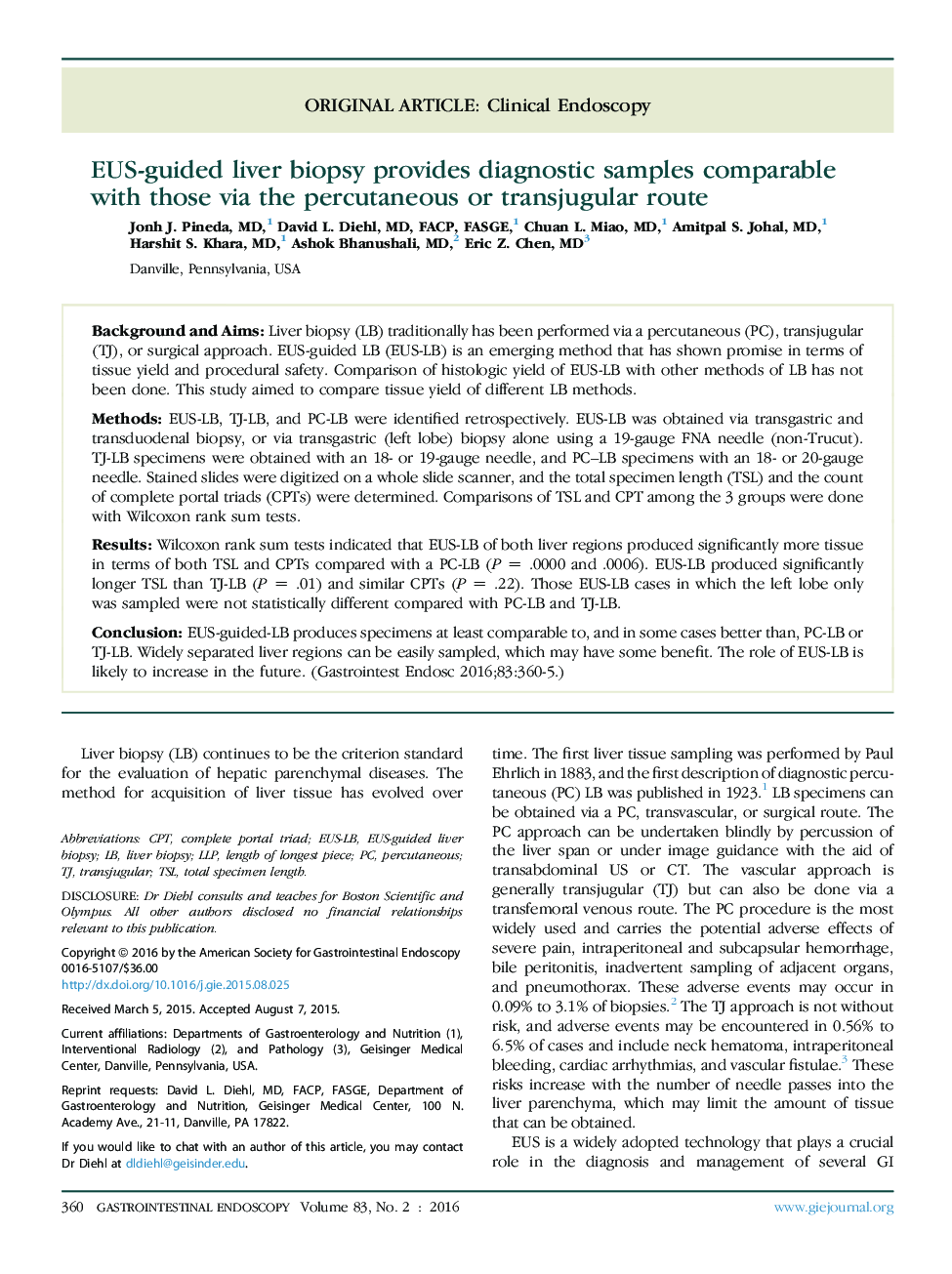| Article ID | Journal | Published Year | Pages | File Type |
|---|---|---|---|---|
| 3301933 | Gastrointestinal Endoscopy | 2016 | 6 Pages |
Background and AimsLiver biopsy (LB) traditionally has been performed via a percutaneous (PC), transjugular (TJ), or surgical approach. EUS-guided LB (EUS-LB) is an emerging method that has shown promise in terms of tissue yield and procedural safety. Comparison of histologic yield of EUS-LB with other methods of LB has not been done. This study aimed to compare tissue yield of different LB methods.MethodsEUS-LB, TJ-LB, and PC-LB were identified retrospectively. EUS-LB was obtained via transgastric and transduodenal biopsy, or via transgastric (left lobe) biopsy alone using a 19-gauge FNA needle (non-Trucut). TJ-LB specimens were obtained with an 18- or 19-gauge needle, and PC–LB specimens with an 18- or 20-gauge needle. Stained slides were digitized on a whole slide scanner, and the total specimen length (TSL) and the count of complete portal triads (CPTs) were determined. Comparisons of TSL and CPT among the 3 groups were done with Wilcoxon rank sum tests.ResultsWilcoxon rank sum tests indicated that EUS-LB of both liver regions produced significantly more tissue in terms of both TSL and CPTs compared with a PC-LB (P = .0000 and .0006). EUS-LB produced significantly longer TSL than TJ-LB (P = .01) and similar CPTs (P = .22). Those EUS-LB cases in which the left lobe only was sampled were not statistically different compared with PC-LB and TJ-LB.ConclusionEUS-guided-LB produces specimens at least comparable to, and in some cases better than, PC-LB or TJ-LB. Widely separated liver regions can be easily sampled, which may have some benefit. The role of EUS-LB is likely to increase in the future.
